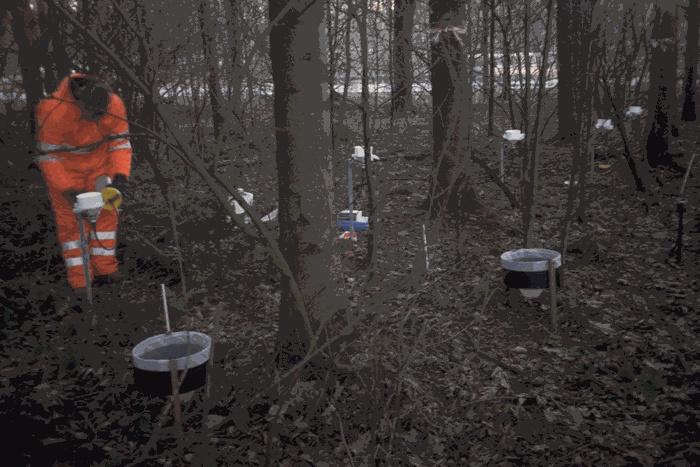

Analysing the ECOFEE dataset significant correlations between nitrate leaching and several parameters (N concentrations in foliage, foliage litter and forest floor material, and N flux in litterfall) were found especially when separating conifers and broadleaf forest sites. The most pronounced relationship including both forest types was between nitrate leaching and forest floor C/N ratio (r2=0.39, n=33, p=0.0002) (Figure 1). This relationship was used in the models MAGIC7 and WANDA developed in the DYNAMO project.

Nitrate leaching vs C/N ratio at 33 temperate forest sites in Europe (ECOFEE database). Leaching losses are estimated from continuous sampling (>2 years) of soil water below the root zone combined with some kind of simple hydrological modelling. Methods vary from site to site (Gundersen et al., 1998)
Forest floor C/N ratios may be used to assess risk for nitrate leaching in conifer stands using >30, 25 to 30, and <25 to separate low, moderate, and high nitrate leaching risk, respectively (Table 1).
| Forest floor C/N ratio (g/g) | above 30 | 25 to 30 | below 25 |
| N-status | N-limited | Intermediate | N-saturated |
| Risk for nitrate leaching | low | moderate | high |
Forest floor C/N ratio as a rough indicator of ecosystem N status in mature coniferous forest. Risk of nitrate leaching relate to cases where the forest receive more than 10 kgN ha-1yr-1 in deposition (Gundersen et al., 1998).

Gundersen, P., Callesen, I. and de Vries, W., 1998. Nitrate leaching in forest ecosystems is controlled by forest floor C/N ratio. Environmental Pollution, 102: 403-407.
Relationships between nitrogen (N) output with seepage water and forest floor C/N ratios were analysed by use of three independent datasets: i) a compilation of input-output studies in temperate forest ecosystems in Europe; ii) a seven years national Danish survey of nitrate concentrations in forest soils; and iii) a similar one year Dutch survey. Nitrate leaching and nitrate concentrations were negatively correlated with forest floor C/N ratios in all three datasets, though the correlation was weak in the Dutch dataset. Sites with a C/N ratio below 25 leached nitrate or had elevated nitrate concentration in the three datasets. Nitrate was not present in the subsoil at sites with C/N ratios above 30 in the European and Danish data. In the less intensively monitored Dutch forest soils nitrate concentrations at C/N ratios above 30 were variable. Forest floor C/N ratios may be used to assess risk for nitrate leaching in conifer stands using >30, 25 to 30, and <25 to separate low, moderate, and high nitrate leaching risk, respectively.
e-mail: Per Gundersen pgu@fsl.dk